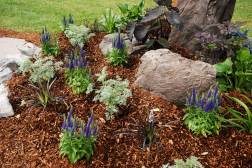Transform Your Garden with the Best Materials for Outdoor Planters
Choosing the right materials for outdoor planters can significantly enhance the look and health of your garden. Outdoor planters come in various materials, each offering unique benefits and aesthetics. In this article, we’ll explore some of the best materials to help you make an informed decision that suits your garden’s style and needs.
Terracotta Planters: Classic Beauty and Breathability
Terracotta is a timeless material known for its natural reddish-brown color that adds warmth to any garden setting. These porous clay pots allow air and moisture to pass through, promoting healthy root growth. However, terracotta can be fragile in freezing temperatures, so consider bringing them indoors during harsh winters or using frost-resistant varieties.
Ceramic Planters: Stylish and Versatile
Ceramic planters are glazed clay pots that come in various colors and patterns, making them great for adding a decorative touch to your outdoor space. They retain moisture well but may be heavier than other options. Like terracotta, ceramic planters should be protected from extreme cold to prevent cracking.
Wooden Planters: Natural Charm with Durability
Wooden planters offer a rustic look that blends seamlessly with garden environments. When treated properly with sealants or linings, they resist rot and insect damage effectively. Cedar and redwood are popular wood choices due to their natural resistance to decay. Wooden planters also provide good insulation for plant roots against temperature fluctuations.
Metal Planters: Modern Look with Longevity
Metal planters such as those made from galvanized steel, aluminum, or corten steel bring a contemporary feel to gardens with sleek designs. They are durable and resistant to weather elements but may heat up quickly under direct sun, which could affect root temperature. Using liners inside metal containers can help protect plants from heat stress.
Plastic Planters: Lightweight and Affordable Option
Plastic is a versatile material widely used for outdoor planters due to its lightweight nature and affordability. High-quality UV-resistant plastics can withstand sun exposure without fading or becoming brittle over time. Plastic pots retain moisture effectively but ensure good drainage holes are present to prevent waterlogging.
Selecting the best material for your outdoor planter depends on your aesthetic preferences, climate considerations, and plant requirements. Whether you prefer the classic charm of terracotta or the modern edge of metal containers, understanding each material’s advantages will help transform your garden into a beautiful oasis.
This text was generated using a large language model, and select text has been reviewed and moderated for purposes such as readability.


